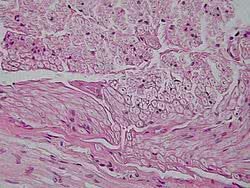The polar bear (Ursus Maritimus) is a solitary mammal that lives in the icy waters of the Arctic Circle region. It is the largest species of bear that lives in places with low temperature, being much feared by other animals that inhabit the place.
Considered the largest terrestrial carnivore and the main symbol of resistance in the Arctic, the polar bear has been suffering from climate change.
Polar Bear Characteristics

The polar bear is known for its exuberant size and whites, which help in camouflage on ice when hunting.
To withstand the icy waters it lives in and help with body control, the polar bear has a thick layer of fat and fur.
Regarding the size of the polar bear, the male can weigh up to 800 kg and measure 2.50 meters when standing upright. The female can measure up to 2 meters with a weight of up to 300 kg.
They are considered excellent swimmers, especially because of their large forelegs. Swimming speed averages 10 km/h.
polar bear behavior
The polar bear is a solitary animal for most of its lifespan. Only in the breeding period do they live collectively.
The living area can vary, reaching up to 950,000 square kilometers. The size of the area can be influenced by the females and their offspring, thus requiring a larger space.
polar bear habitat

The polar bear lives in the icy waters of the circle arctic polar, which mainly involves five countries: Denmark, Norway, Russia, United States (Alaska) and Canada.
The arrangement of floating ice and permanent ice interferes with the geographic arrangement that the polar bear can be found.
Even though it lives both at sea and on land, it is considered a marine mammal because this is its primary environment.
The preferred place to live is where ice meets water, facilitating hunting and feeding.
Learn more about other animals that also live in icy waters:
- orca whale
- right whale
- Penguin
polar bear feed
The polar bear's feeding is basically done by animals that live in icy and cold waters.
The most common prey in the polar bear's diet is seals, but they also feed on salmon, birds and others. mammals like dolphins and sea lion cubs.
As a strategy used to capture prey, the polar bear digs a hole in the ice to hide and wait for the ideal moment of attack. As soon as the victim appears on the surface, the attack is made.
They also feed on dead whales trapped in glaciers, which melt in the hottest season.
Polar bear reproduction

Polar bears are polygamous animals, but in the gestation period of the female the male remains together.
The breeding period takes place between the months of March and June. The implantation of the fertilized egg is delayed until autumn, around the month of August.
Pregnancy lasts between 195 and 265 days, which is when food intake is intensified resulting in a gain of approximately 200 kg.
The nest is built by the female, who digs a tunnel in the snow in October or November. After the construction of the burrow, the female goes into hibernation and her heart rate decreases from 45 to an average of 27 beats per minute.
Each gestation can be born up to two offspring with an average of 600 grams each and measuring between 30 and 35 cm. After birth, the pups remain with their mother in the den until they reach approximately 15 kg and become independent until they are two or three years old.
Threats to polar bear

The polar bear is classified as vulnerable, at risk of extinction.
O global warming it is one of the causes that hinder the survival of polar bears. The main damage caused is related to the melting of glaciers, that is, their habitat.
Another threat to polar bears is oil extraction. This action causes water contamination, releasing pollutants that harm the food and compromise the animal's immune system.
Read too:
- Climate changes
- Greenhouse effect
- The 10 biggest predators in the animal kingdom



